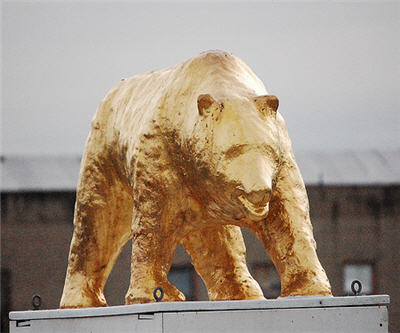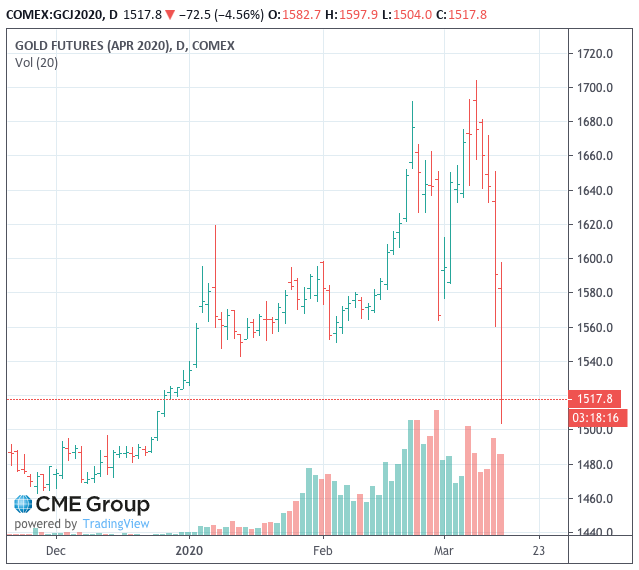Gold is headed for its worst two-day drop in history as pandemic panic grips global financial markets.

Gold for delivery in April come close to crashing through the $1,500 level on the Comex market in New York on Friday, down $86 an ounce, or 5.4% from yesterday’s closing price of $1,590.30 an ounce. By the close on Friday, gold pared some of those losses, closing at $1,520.
Contracts representing 52 million ounces of gold had exchanged hands by the close after a week of heavy selling. Gold is down more than $172 an ounce from its opening levels on Monday, a day the metal also hit a seven-year high of $1,704.30 an ounce.

Friday’s rout also wiped out gold’s 2020 gains from record-breaking ETF buying. Global gold-backed ETFs had $4.9 billion or 84.5 tonnes of net inflows in February, boosting holdings to new all-time highs of 3,033 tonnes.
Friday could top the biggest intra-day drop in the price since April 15, 2013 when gold succumbed to a shock and awe short-selling strategy. Gold ended that day more than $87 below the previous closing – and never recovered on its way to $1,050 an ounce three years later.
Gold hit a record $1,909 an ounce intra-day on 23 August 2011, but the next day suffered one of its few triple-digit one-day losses when it plummeted $105, ending the week down more than 10% from the all-time high.
Adjusted for inflation, gold’s highest price point ever was on January 21, 1980 when the precious metal hit $850, only to plunge the very next day to $737.50, a 13% fall.
The biggest fall in percentage terms came in February 1983, when the yellow metal fell from $475 to $408.50 over two days, a 14% decline.
